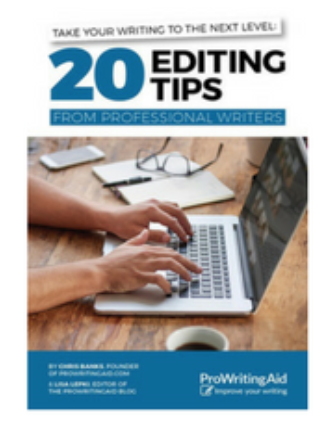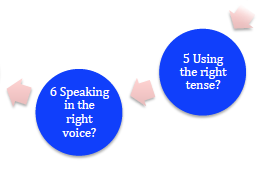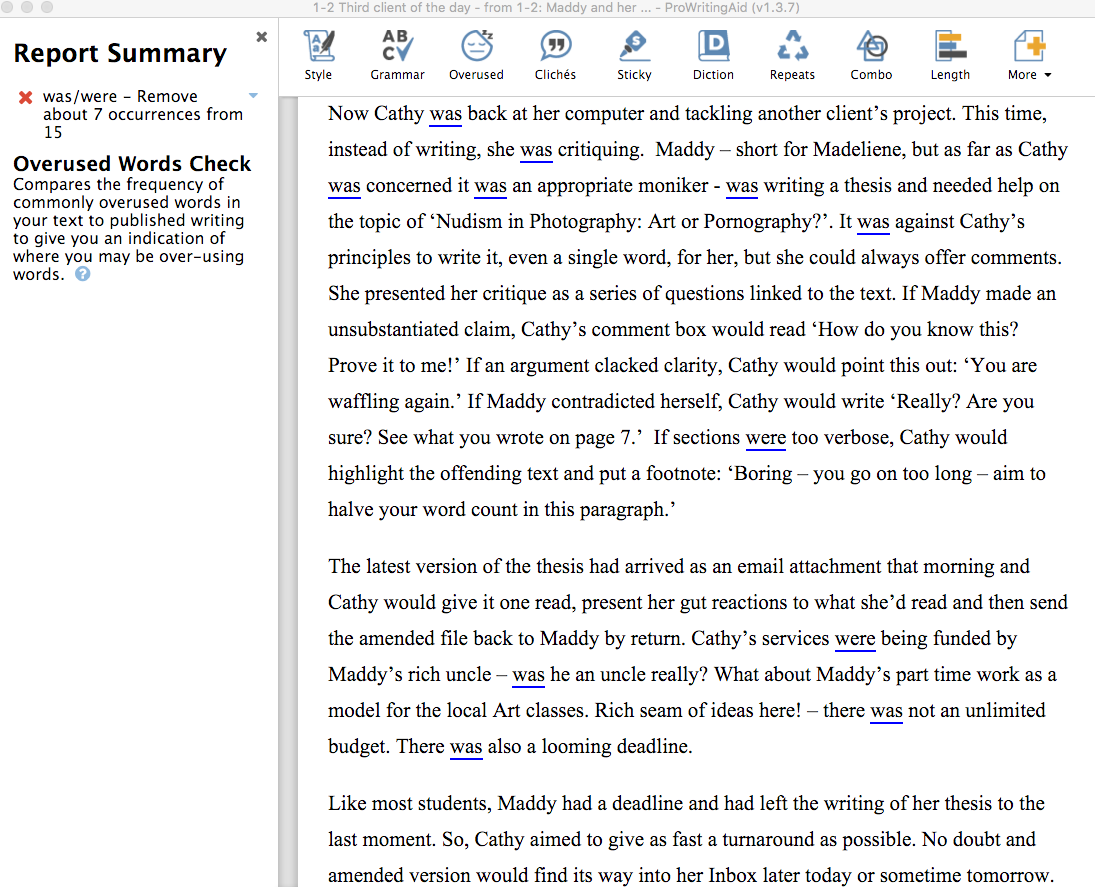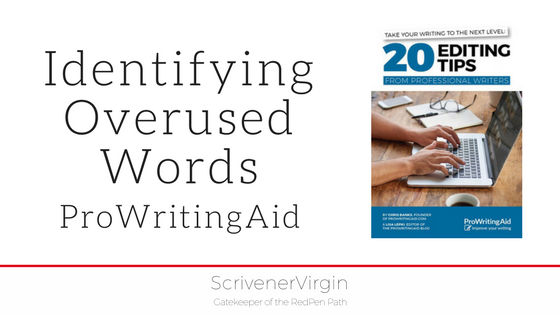
ProWritingAid: Identifying overused words
As we progress through the steps of the Red Pen Editing cycle, we are gathering more and more editing tasks that will need addressing once we reach step 8: ‘Time to use the red pen!’
 We have a way to go yet – and steps 5 and 6 may result is our having to do some major redrafting.
We have a way to go yet – and steps 5 and 6 may result is our having to do some major redrafting.
So, what are we worrying about at this stage of the Red Pen Editing cycle?
A story is told – from the narrator’s point of view and at a moment in time (let’s call it NOW). Choosing who to tell your story is a major decision, one that you might have made subconsciously. The events of the story happen relative to the narrator’s NOW time. It could be in the present, or looking back at the recent past, or recalling life events from decades ago – or a mixture of all three.
If, at any point, you decide to change narrator, or their NOW point, you will be faced with a major redraft. Changing tense, from past to present, for example, can affect nearly every sentence.
An example from NANO 2011 draft: The Ghost Writer
This is a scene from The Ghost Writer, written in 2011 during NaNoWriMo and still very much in first draft form. In those days, I was unaware of the effect of many of the decisions I was taking as I embarked on writing yet another new novel every 1 November.
Today (an older and, maybe, wiser writer), with ProWritingAid, seeing the Overused report, with all the underlinings of ‘was’ and ‘were’, I wonder if perhaps I used the wrong tense for this story.

Third-person past-tense is a natural way of telling a story, but there are alternatives that might work better. In Safari Supper, my 2015 NANO novel, I used first-person present-tense for chapters told from the main character’s point of view.
ProWritingAid‘s Overused report
The Overused report had me checking the tense, but its objective is to identify other possible faults in your writing:
- Wishy-washy words such as ‘could’, ‘might’ and ‘maybe’
- Verbs such as ‘saw’, ‘felt’ and ‘knew’ that can indicate your writing is verging on ‘tell’ rather than ‘show’
- Words such as ‘very’, ‘so’ and ‘really’ which could
so very easilybe deleted without loss of understanding - Nonspecific words such as ‘interesting’ which convey almost no information
- Awkward sentence constructions – or ones that are overused
Having these prompts to look at words which might (or might not) need fixing is one way of polishing your words. Reading the explanations also raises your level of understanding of what good writing is all about.
ProWritingAid works with Scrivener
This is post 4 of my series looking at how ProWritingAid works with Scrivener.
Why not join me on my journey? If you’d like to trial ProWritingAid and work alongside me in exploring its features, click on any ProWritingAid link on this page.
And? There’s more?
- ProWritingAid offer a free eBook for you to download.
- If you’re interested in learning more about the Red Pen Editing cycle, my book is available on Amazon, only £2.99.
The ScrivenerVirgin blog is a journey of discovery:
a step-by-step exploration of how Scrivener can change how a writer writes.
To subscribe to this blog, click here.
Also … check out the Scrivener Tips
on my ScrivenerVirgin Facebook page.



No Comments